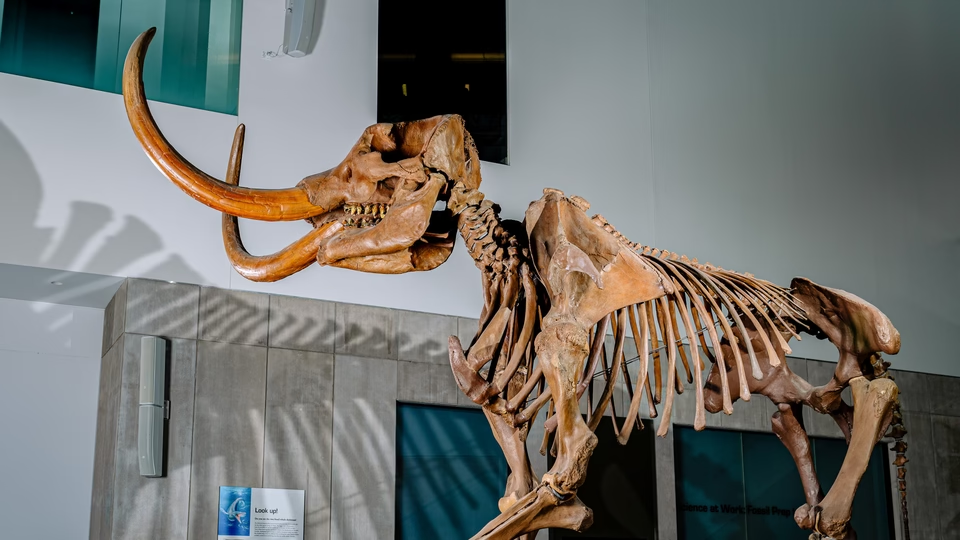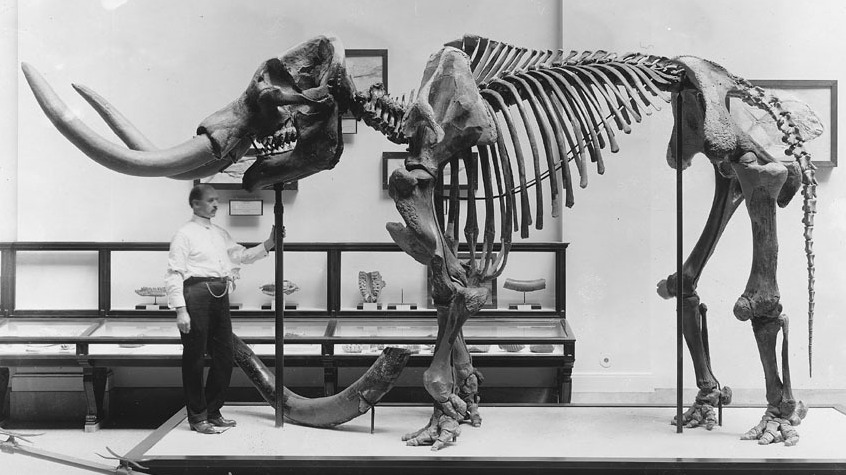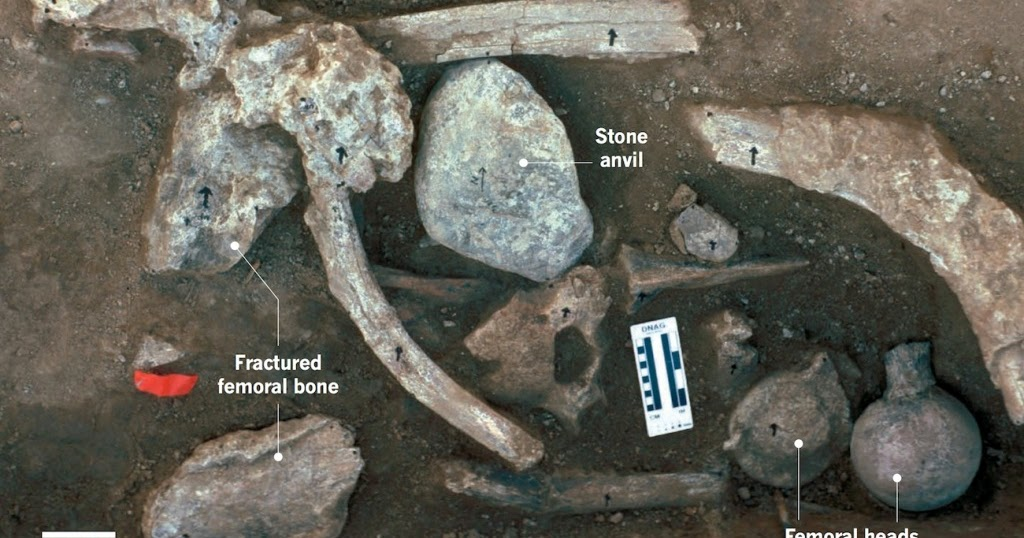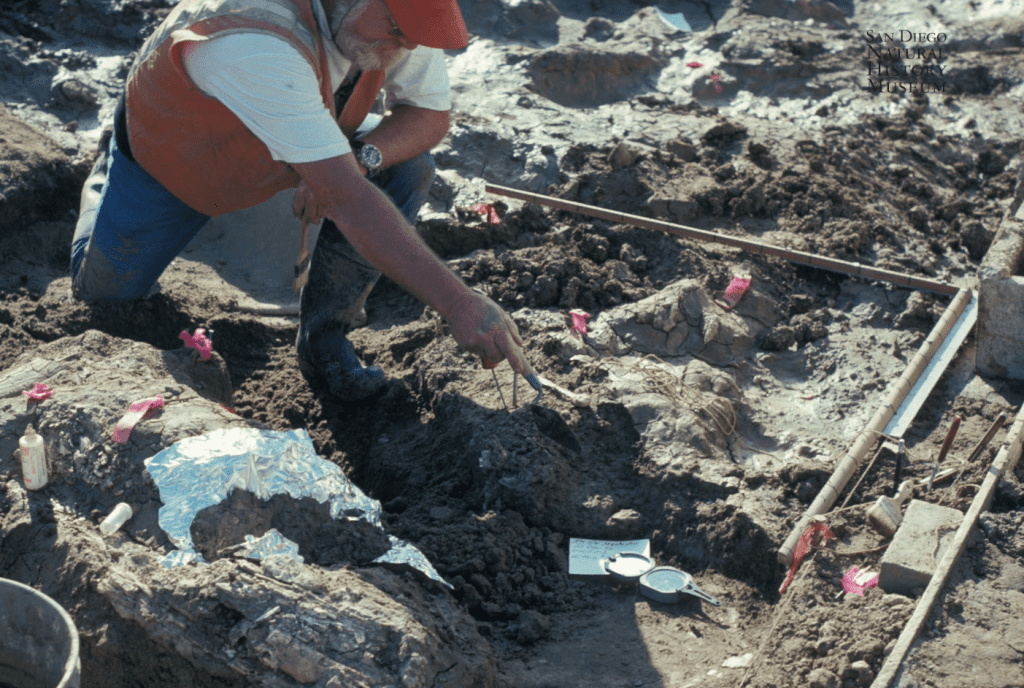In 1992, a routine construction project in San Diego, California, took an unexpected turn when workers stumbled upon fossilized bones buried deep in the soil. At first, the discovery of mastodon remains seemed like a fascinating but familiar window into the Ice Age. But as researchers dug deeper both literally and scientifically they uncovered something far more intriguing.
This wasn’t just a prehistoric skeleton. It may have been the oldest known crime scene in North America. The bones carried unusual marks, broken in ways that suggested deliberate human activity. The real shock came years later when new technology revealed that these remains were approximately 130,000 years old.

What Is a Mastodon and Why Was It Important?
Mastodons were massive, elephant-like creatures that roamed North America during the Pleistocene Epoch. They lived in forests and were covered in thick fur, with long curved tusks used for foraging and defense. Unlike mammoths, their distant cousins, mastodons had different tooth structures suited for chewing wood and coarse vegetation.
Finding the remains of a mastodon is not unusual in itself. However, what made this discovery groundbreaking was the condition of the bones and what they revealed about early humans.

Clues Hidden in the Bones
The fossilized bones found at the Cerutti Mastodon site displayed signs of deliberate breakage. Long bones had been cracked in a spiral fashion, as if someone had struck them with force while they were still fresh. Nearby, researchers also found large stones positioned in a way that suggested they were used as hammers or anvils.
Video:
Mastodon bones point to ancient humans in San Diego
This pattern of damage is not something that happens naturally over time. It closely resembles the way ancient people processed large animal bones for marrow or to shape tools. These findings prompted a radical idea: early humans may have been in North America much earlier than anyone thought possible.
130,000 Years Ago: Too Early for Humans in North America?
Until the Cerutti Mastodon discovery, the earliest widely accepted evidence of humans in North America dated back around 13,000 years. These were the Clovis people, known for their distinct stone tools and spear points.
But if humans were processing mastodon bones 130,000 years ago, that would push back the timeline by over 100,000 years a staggering difference. Such a claim was bound to spark controversy, and it did.

Scientists were split. Critics argued the bone fractures could have resulted from natural causes like heavy machinery or geological pressure. Supporters pointed to the precise breakage patterns and the placement of the stones as too deliberate to be accidental.
Despite the debate, the Cerutti Mastodon site forced the scientific community to reconsider long-held assumptions about early human migration.
Did Early Humans Really Arrive That Early?
The idea that humans or their ancestors reached the Americas 130,000 years ago challenges the traditional story of human dispersal from Africa. One possible explanation is that an earlier hominin species perhaps Neanderthals or Denisovans crossed into North America much earlier than Homo sapiens did.
Video:
Why Scientists Don’t Want To Bring Mastodons Back | The Most Dangerous Ice Age Creature
Another theory suggests that early humans may have used coastal routes, traveling by boat along the Pacific Rim. These pathways, now submerged or eroded, would have left few archaeological traces. If true, the Cerutti Mastodon site could be one of the only clues to this lost chapter of human history.
A Discovery That Rewrites the Textbooks
Whether or not all scientists agree on the interpretation, the Cerutti Mastodon discovery has opened new avenues for exploration. It has encouraged researchers to reexamine other fossil sites and use more advanced tools to analyze them.
More importantly, it reminds us that history is never set in stone. One accidental discovery can overturn centuries of accepted theory. The bones of a long-dead mastodon, broken and buried beneath a modern freeway, may hold answers to one of humanity’s biggest mysteries when and how we first arrived in the Americas.



